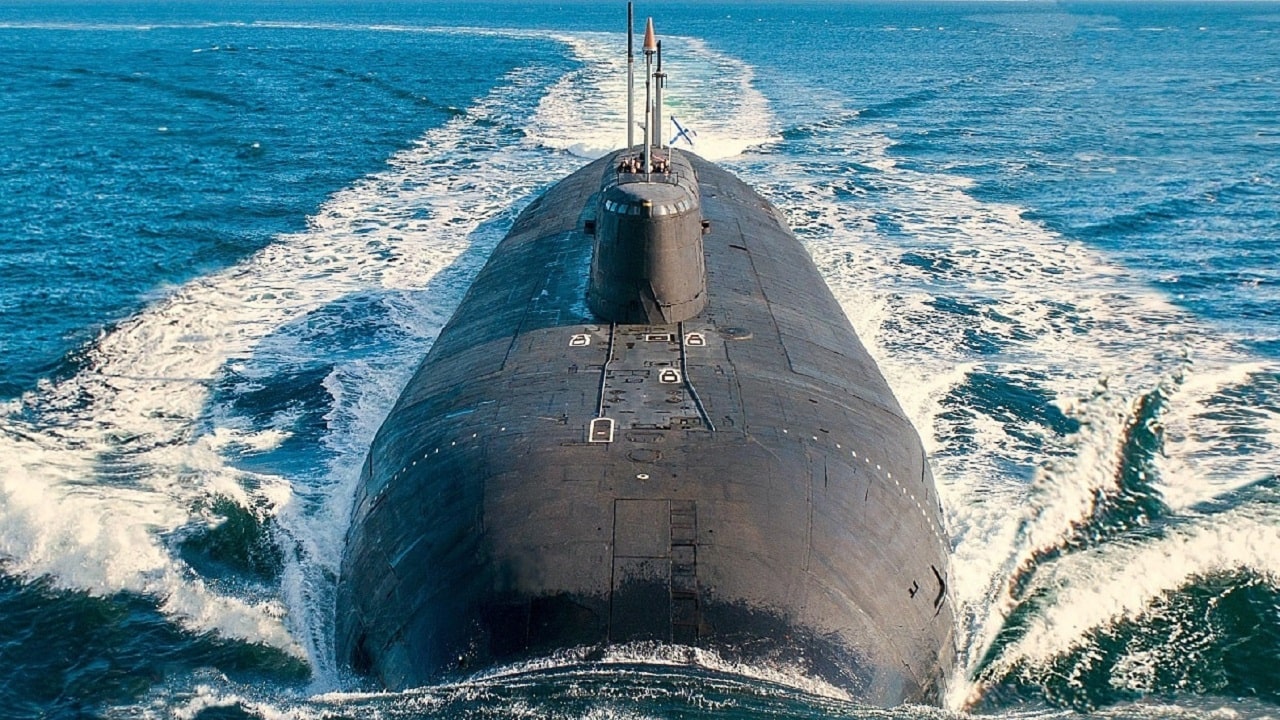Nuclear Weapons Convoy Spotted Heading to Ukraine. What is Russia Planning? : Video footage shared on pro-Kremlin Telegram channel Rybar on Sunday appeared to show a Russian military train, operated by the branch of the Russian military responsible for the country’s nuclear arsenal, heading towards the front lines in Ukraine.
The video footage appeared to depict upgraded BPM-97 armored personnel carriers being sent to Ukraine, as well as other advanced military equipment that Russia has struggled to replace in the wake of Western sanctions on the import of semi-conductors, parts, and technology.
Also in recent days, reports revealed how Moscow had deployed the Russian military’s biggest submarine which is capable of carrying nuclear warheads.
The delivery from the 12th Main Directorate of the Russian Ministry of Defense is good news for Russian soldiers on the front line, still struggling to effectively counter the long-distance HIMARS missile systems that have proven essential in Ukraine’s recent counter-offensive. However, the fact that the weapons were transported by this specific branch of the Russian Armed Forces sparked concerns about the possibility of impending nuclear strikes.
NATO Warns Belgorod Nuclear Sub Has Left Its Base
NATO officials warned on Monday that a Russian nuclear-powered submarine had gone missing from the harbor in the Arctic where it is usually stored and that it could be carrying a “doomsday weapon.”
?? Another railroad train with military equipment going to the front line by rail somewhere in central Russia. pic.twitter.com/3g3nWhTEtT
— Rybar in English (@rybar_en) October 2, 2022
Officials suggested that Russia could be preparing to test the Belgorod submarine’s “Poseidon” weapons system, which is a drone equipped with a nuclear bomb that is said to be capable of creating a “radioactive tsunami.” Officials expressed concern that the Russians may be planning to launch a strike in the Black Sea.
The Poseidon weapons system allows the drone to be deployed from the stealth submarine at any time and can be launched even from a depth of one kilometer.
Retired U.S. General Warns Russia Would Be “Destroyed” Following Nuclear Strike
During an interview with ABC News on Sunday, retired four-star U.S. general David Petraeus said that the United States and NATO allies would completely destroy Russia’s military and sink its entire Black Sea fleet if Putin follows through on his threat of deploying tactical nuclear missiles.
Petraeus, who also served as the director of the CIA, described how American forces would respond to a nuclear attack.
“Just to give you a hypothetical, we would respond by leading a NATO, a collective effort that would take out every Russian conventional force that we can see and identify on the battlefield in Ukraine and also in Crimea and every ship in the Black Sea,” Petraeus said.
The retired general also said that the use of nuclear weapons by Russia would be enough to bring the United States and NATO directly into the conflict. Petraeus was not certain, however, whether the spread of nuclear radiation from Ukraine to NATO territories would trigger NATO’s Article 5, which requires all member states to defend one another in response to an attack.
At this stage of the conflict, Putin knows that winning on the ground will require new, more advanced weapons and a dramatic increase in the number of soldiers deployed to Ukraine. Failing that, Putin will need to resort to the threat of nuclear strikes or the actual use of tactical nuclear weapons.
Whether Putin goes ahead with that plan, however, depends on whether the Russian president believes that the U.S. can indeed destroy his military, and whether the U.S. would actually launch the strikes in the first place.
Jack Buckby is a British author, counter-extremism researcher, and journalist based in New York. Reporting on the U.K., Europe, and the U.S., he works to analyze and understand left-wing and right-wing radicalization, and reports on Western governments’ approaches to the pressing issues of today. His books and research papers explore these themes and propose pragmatic solutions to our increasingly polarized society.

